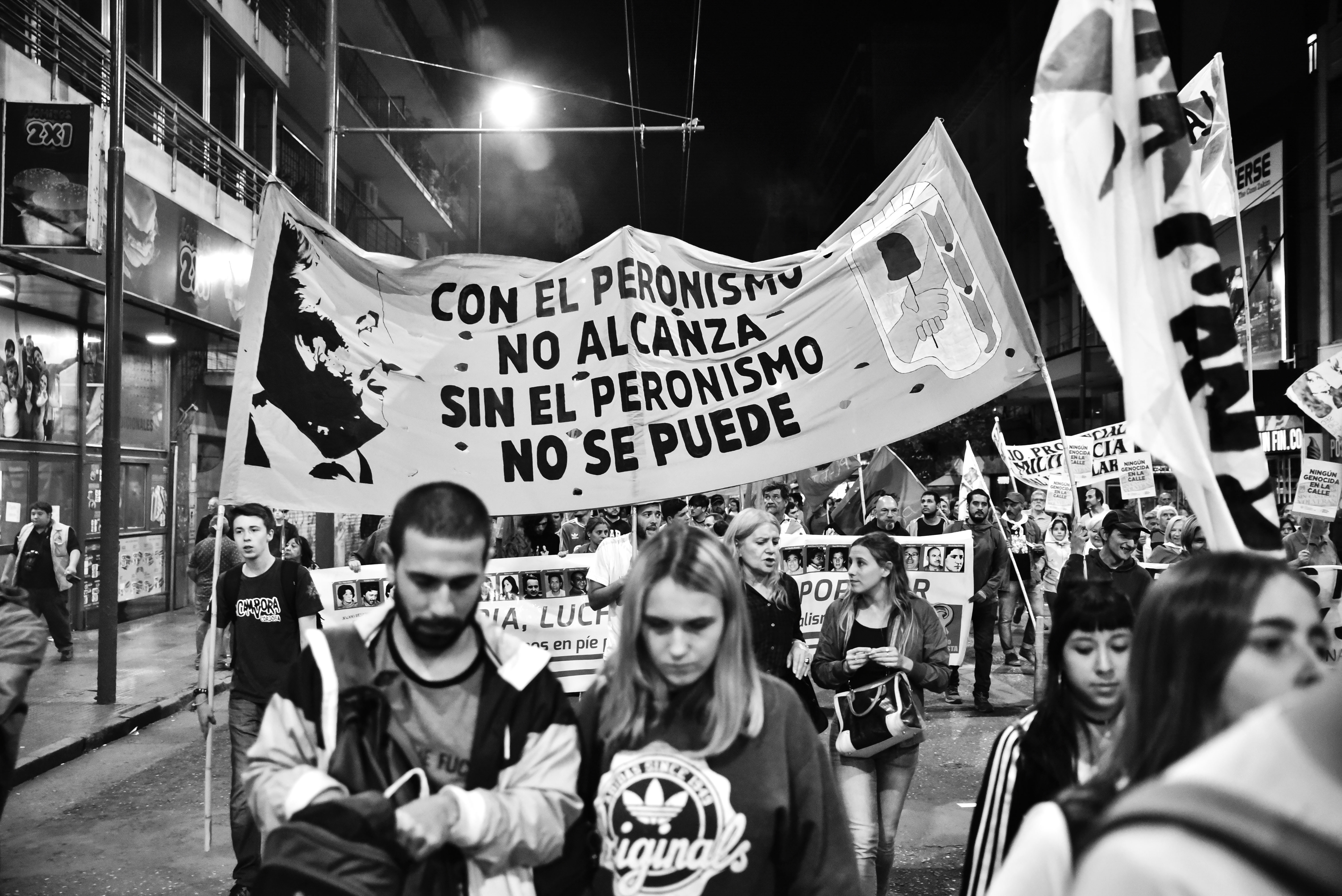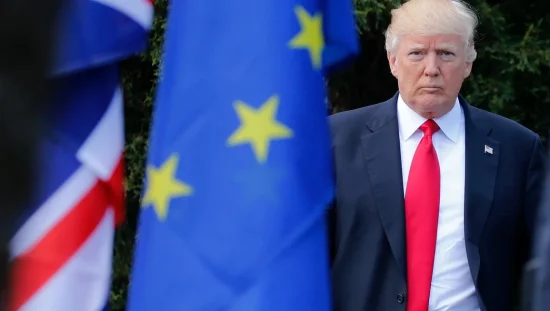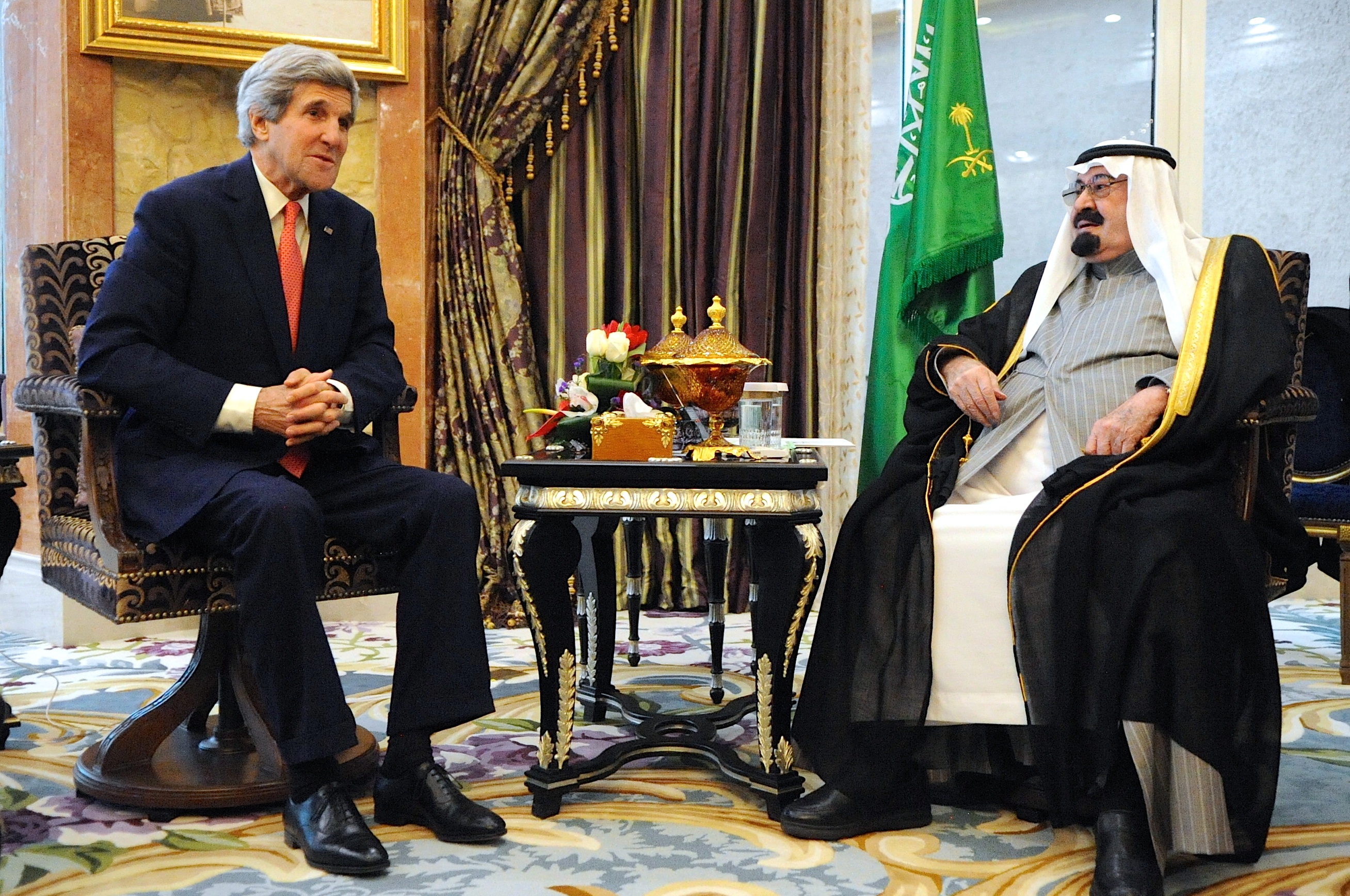October 27 marked an important day for the people of Argentina, as the country voted for a new president. Alberto Fernández, a center-left politician, triumphed over the incumbent, Mauricio Macri—a center-right politician. This election came at a pivotal time for Argentina’s politics and, more importantly, its economy. Argentina’s economic crisis spans decades, but the current rate of inflation of the Argentine peso scares many into believing the damages to the economy may be irreparable. At the end of 2018, Argentina’s inflation rate was 48 percent. Macri worked to slow the inflation rate by negotiating a multibillion-dollar standby deal with the International Monetary Fund (IMF) and by increasing restrictions on the monetary base, but the results have been underwhelming.
Macri criticized the former ruling party, Partido Justicialista, and its party leader, former president Cristina Kirchner, who is now the vice-president-elect. At the start of his term in 2015, Macri lambasted the control of capital and heavy government subsidies of the Kirchner era, and blamed Kirchner for Argentina’s worsening economic situation, repealing these policies when he came into office. Nevertheless, Kirchner maintained her popularity in Argentina and used it to ensure Fernández a strong mandate of votes.
Since its first coup d’etat in 1930, and for the rest of the 20th century, Argentina has been at the behest of only two political forces: military juntas and Peronismo. The latter stems from the work of Juan Domingo Perón during his three terms as president of Argentina. Peronism is so ingrained in the politics of Argentina that from the time of Perón’s death in 1974 to the election of Macri in 2015, the Partido Justicialista held the Argentine presidency with little exception. Peronism’s influence on modern Argentinian politics can be seen through the adoption of Perón’s labor reforms and social programs. The Peronista party still holds major pull within Argentina to the point that Peronists like Fernández can make it to the general elections.
However, Perón’s long-lasting progressive image is not only misleading, but also completely contradictory to reality. Juan Perón was able to establish himself as president by building a following in the military, and more importantly, the labor movement. He never needed to rely solely on one faction and frequently made minor concessions to maintain support from each group. As a result, Juan Perón was able to enact authoritarian measures with little pushback, by creating a dilemma that forced workers to choose between their livelihoods and personal rights.
Before Perón, Argentina was plagued by inequality and a political monopoly. From 1829 to 1943, the Argentinian oligarchy controlled the government with almost no interruption, and implemented laws that gave more and more power to the wealthy, land-owning class. In 1942, a few thousand Argentines owned more land than Belgium, Holland, Denmark, and Italy combined. Elections were a farce and the public was almost completely politically inarticulate. Even after the landowning class’ chosen president Roque Sáenz Peña granted men universal suffrage in 1912, the oligarchs continued to seize control. When Hipólito Yrigoyen—a member of the Radical Civic Union—was elected president in 1916, the Argentine aristocracy pushed to expel him, finally overthrowing him during his second term. The aristocracy instilled a puppet as president, General José Félix Uriburu. Uriburu’s appointment completely shifted the role of Latin America’s greatest political force: the military. Uriburu’s presidency pushed the army into politics and established an alliance between the army and oligarchy. This alliance was long-lasting; after 1930, and for the rest of the 20th century, more military leaders governed Argentina than civilians.
Juan Perón was born to farm laborers sixty miles outside of Buenos Aires. After a brief stint in the Patagonia region, Perón returned to Buenos Aires to complete school. He enrolled at the Colegio Militar de la Nación and later attended other military education centers. Perón was not a member of the oligarchy, but his position in the military allowed him to get involved politically. In about ten years, Perón went from attending War College, to being Private Secretary to the Minister of War, to serving as Military Attaché (a military expert) to Chile, to teaching at the Naval War College. Then, from February 1939 to January 1941, Perón served as Military Attaché to Italy; Perón’s time in Italy had a profound effect on his ideology. In Italy, Perón learned from the fascist government to emphasize nationalism, authority, and leadership.
Around this time, the relationship between the oligarchs and military shifted, as some military leaders grew tired of the oligarchy’s control and saw a chance to insert themselves into the government. In the early 1940’s, many officers, including Perón, formed Grupo de Oficiales Unidos (GOU) in opposition to both the Radical Union Party and the conservative government. By 1943, Perón had begun to establish influence within the government. GOU amassed an enormous following within the military, as 60 percent of the 3,600 Argentine officers joined. During its first years, GOU had no clear leader; however, Perón gradually worked to assume this role. In 1943, the GOU instigated a coup and assumed power. Perón was given the position of Minister of Labor, a position that had little power at the time. Past regimes ignored laborers, and thus Perón sought to capitalize on this untapped demographic through his new position.
To gain the support of Argentinian laborers, Perón worked to change the department’s image. First, he renamed it to the Secretariat of Labor and Welfare. Under this new branch, Perón dramatically raised the minimum wage of farm laborers from $15 to $25 a week. Perón also wanted to increase dissent in Argentina and fracture any political coalitions; therefore, he encouraged strikes by promising that all demands of unions would be met. These labor strikes led to negotiations, which Perón used to strengthen his authority. In 1945, Perón gained exclusive control of collective bargaining contracts through an executive decree. This, in turn, allowed Perón to call all the shots in regards to labor. Perón used this power to reward the unions that supported him and punish the ones that didn’t. Instances of government persecution of syndicates against Perón stacked up to the hundreds. Union members who opposed Perón were jailed, while union members who supported him received high-paying jobs as the heads of unions. Perón earned greater support by increasing the scope of the Instituto Nacional de Previsión Social, Argentina’s social security program. In 1946, Argentine workers were funneling 11 percent of all salaries into this system and by 1950, workers were paying only 10 percent and employers paid 15 percent. As Perón garnered more support, his influence in the government also grew. In 1945, Perón became Minister of War and Vice President. By this time, Perón’s ambitions were well known, and very few would be surprised by his move for the presidency in the coming year. Perón even started trying to collect votes, stating that a vote for him would mean every worker received a parcel of land in the future. Fearful of Perón’s growing popularity, his opponents exerted their political influence and forced Perón to resign from all three of his positions. He was then arrested and imprisoned, sparking his military and labor supporters to organize, pushing for his release. Perón’s wife, Eva Perón, rallied unions and pro-labor movements together to fight for her husband’s freedom. Thanks to her efforts, around 500,000 Argentines took to the streets on October 17, 1947, to demand Perón’s release, in what is now known as the March of the Descamisados.
These supporters were crucial to Perón’s successful presidential bid that same year. Using his position and newfound support from laborers, Perón used a smear campaign to push the president out of office; he subsequently established a Peronist puppet government. Perón’s promise to redistribute land did not come to fruition with the same scale that he promised, but some regions did benefit. This limited land redistribution and his new influence within the labor movement were major factors in the success in his later power grab. Ultimately, Perón’s work in the labor sector provided unions a seat at the table, all the while trampling any syndicates that went against him.
There is no doubt that Perón’s regime was authoritarian in nature. For every wage increase that Perón gave to the workers, he expanded the power of the Executive branch. While it is true that Argentine workers had never prospered as much as they did under Perón, this prosperity came at the cost of their personal freedoms. Nevertheless, Perón had so much support that he was able to implement his policy changes with little resistance—the most important of these was the 1949 Constitution, which was only possible after Perón controlled two-thirds of the seats in the national congress. Perón updated the 1853 rendition to incorporate language from his and his wife’s speeches verbatim. More essentially, Perón removed the term limits for office in the Executive branch, enshrined the coin-minting power to the Executive branch, created presidential veto power, and removed Congress’ ability to judge the results of presidential elections. Moreover, Perón stacked the judiciary branch, the last remaining opposition to his rule, by impeaching justices on weak premises, claiming they had failed to protect the rule of law when they recognized the military governments before Perón.
Perón used the presidency to maintain support for the military through modernization and promotion projects. By 1951, Argentina was the only country in Latin America that held jet fighters in its fleet. Furthermore, national spending on the armed forces nearly tripled under his control. While there were those within the military ranks that wanted to oust Perón, they did not have the ability to do so at that point in time. Perón removed generals when he saw them as troublesome and promoted the generals who supported him instead. For example, in 1951, he replaced the entire high command of the military, in order to create more loyalty from the top ranks. While this worked for some years, the increasing volatility of their positions and opposition to Perón’s policies ultimately created major dissent within the military.
By 1956, Perón was ousted by a military junta and forced to flee to Spain. While Perón was in exile, the governing democratic and military governments could not get a handle on the nation. Presidents averaged two years in office from 1930-1983, all providing vastly different solutions to get the country out of crisis. The constant turnover of presidents revealed the country’s dissatisfaction with any system offered.
Meanwhile, Perón’s legacy with the masses continued to grow, even after the ensuing governments banned the Peronista party; this censorship of Peronismo caused Perón to become an almost mythical figure within Argentine politics. Perón’s influence now spanned from anti-communist union leaders to Montoneros, a group of revolutionary guerrillas. This divided movement allowed Perón to re-establish his populist appeal in the country. This culminated in Perón’s emergence from exile in 1973 for a third term as president. Perón died a year into his term; still, it was clear that even he could not wrangle the economy and political situation in Argentina. He was followed, once again, by authoritarian military leaders such as Jorge Videla; Videla served from 1976 to 1981 and is largely responsible for the “Dirty War,” where between 10,000 and 30,000 people were killed. Many more disappeared.
The reign of Argentina’s military ended in 1983 with the election of Raúl Alfonsín of the Radical Party. Alfonsín faced some of the harshest moments in Argentina’s economy, with inflation reaching over 5,000% by the end of 1989. He later resigned from the presidency and Peronist candidate Carlos Menem was elected. Although a Peronist, Menem’s policies were drastically different from previous iterations of the ideology. Menem famously claimed that he would cure the economic ails of Argentina by “major surgery without anesthesia.” This strategy included privatizing most of Argentina’s public enterprises including steel, telecommunications, and airlines.
While these strategies worked in the short term, Argentina once again went through a period of hyperinflation. Besides just affecting the economy, Menem’s policies put Perón’s legacy in jeopardy and caused a major fraction within the party. When he left office in 1999, Menem had created a political environment rife with corruption that staved off many investors. Argentina famously stopped payments on its $100 billion debt, resulting in the world’s largest sovereign default. Moreover, the political situation led to a revolving door of presidents, with five being appointed in a span of two weeks—last of which was the only other non-Peronist president, Fernando de la Rúa, who resigned in 2001 halfway through his term. This paved the wave for a renewed populist movement of Peronismo led by Néstor Kirchner.
The clearest emergence of power in Argentina after the turn of the century was undoubtedly Néstor Kirchner and his wife Cristina, who gained enormous support from various voter bases. They rallied the middle and working class with strong social programs like Universal Child Subsidy, “a conditional cash-transfer program (enacted in 2009) that covers 30 percent of those under 18.” He was credited for the highest economic growth in a century and for the decrease in unemployment, as he rescheduled loans with the IMF and increased exports by controlling the economy. Most importantly, Kirchner went to Peronismo’s roots, as he implemented wage increases by decree and subsidized integral industries like food, energy, and transport. Kirchner was also able to draw support from center-right voters by prosecuting those responsible for war crimes during the “Dirty War.” The Kirchner administration—like those in the past—was slowed down by corruption and bad economic turnover by the end of the 2000’s (due to the global recession of 2008), leading to the current economic situation in the country. Although this economic downfall occurred during Cristina Kirchner’s term, she was able to achieve victory in 2011 because of the major fractures in her opposition.
The flexibility and resilience of Peronismo is not only a result of the success of Perón’s policies, but the abject economic failure of the country. This recent election had the Argentinian people decide whether they wanted to continue with Marci’s plans for economic liberalism or return to Peronismo by electing Alberto Fernández and his vice-presidential nominee, Christina Kirchner. Evidently, Peronismo reengaged those who were most negatively affected by the economic crisis. Argentina’s economic crisis is so dire that the lives of many Argentines could be at risk with unemployment rising to 10 percent in 2018. Additionally, three out of ten Argentine citizens are living in poverty. In an attempt to stay out of the public light, Cristina Kirchner endorsed Alberto Fernández for the presidency and joined him on the campaign trail as his vice-presidential nominee, instead of running for office herself. Critics believe this indicated that Fernández is a puppet for Kirchner; however, the presidential hopeful heavily criticized Cristina’s second term from 2011-2015, calling her branch of Kirchnerismo pathetic. Ultimately, Fernández channels the spirit of Perón, standing with leftist movements with his pragmatism. Fernández has pushed for a control on currency that will not restrict the Argentine peso and adamantly opposes any labor reform. Those struggling due to Argentina’s economic conditions have decided to give Peronismo another shot, further cementing the continual influence of Perón, his policies, and his legacy. Speculation has already begun on whether or not Fernández will be able to follow through on his platform of currency control; nevertheless, voters have revealed their desire for Peronismo, and so it will remain in the public consciousness until the end of his term. This election reveals that Peronismo is entrenched in Argentine politics, and will continue to be integral to future Argentine discourse, at least for the time being.



